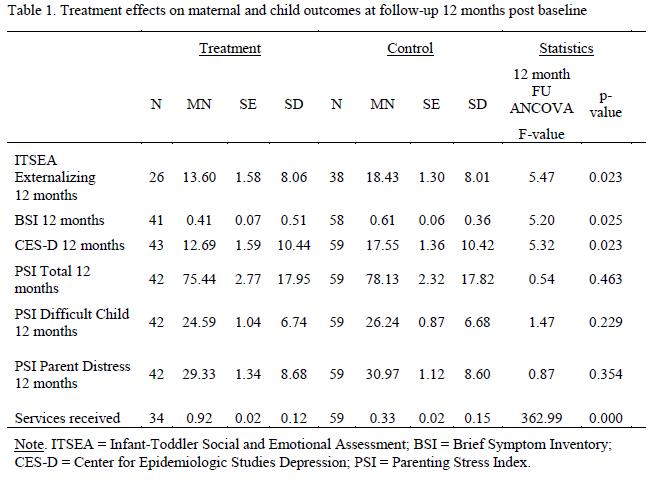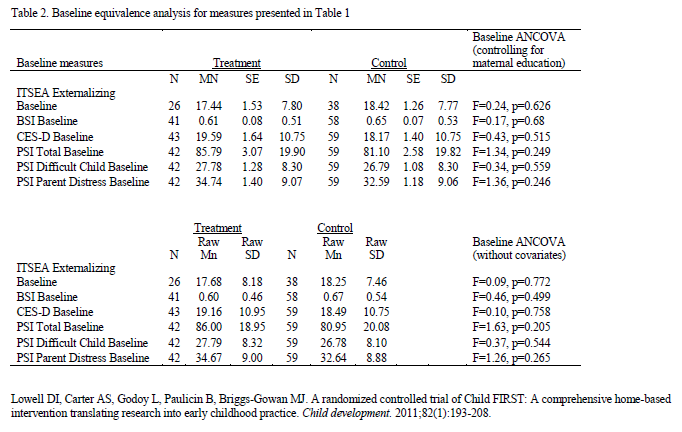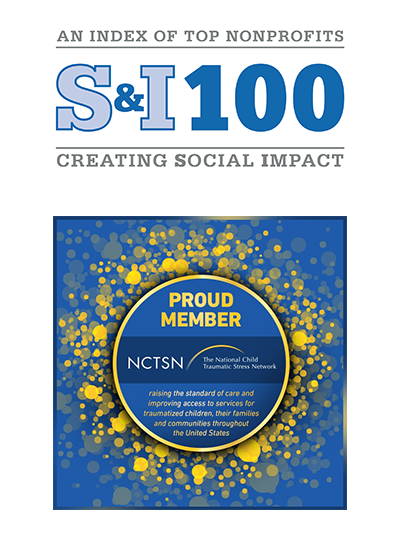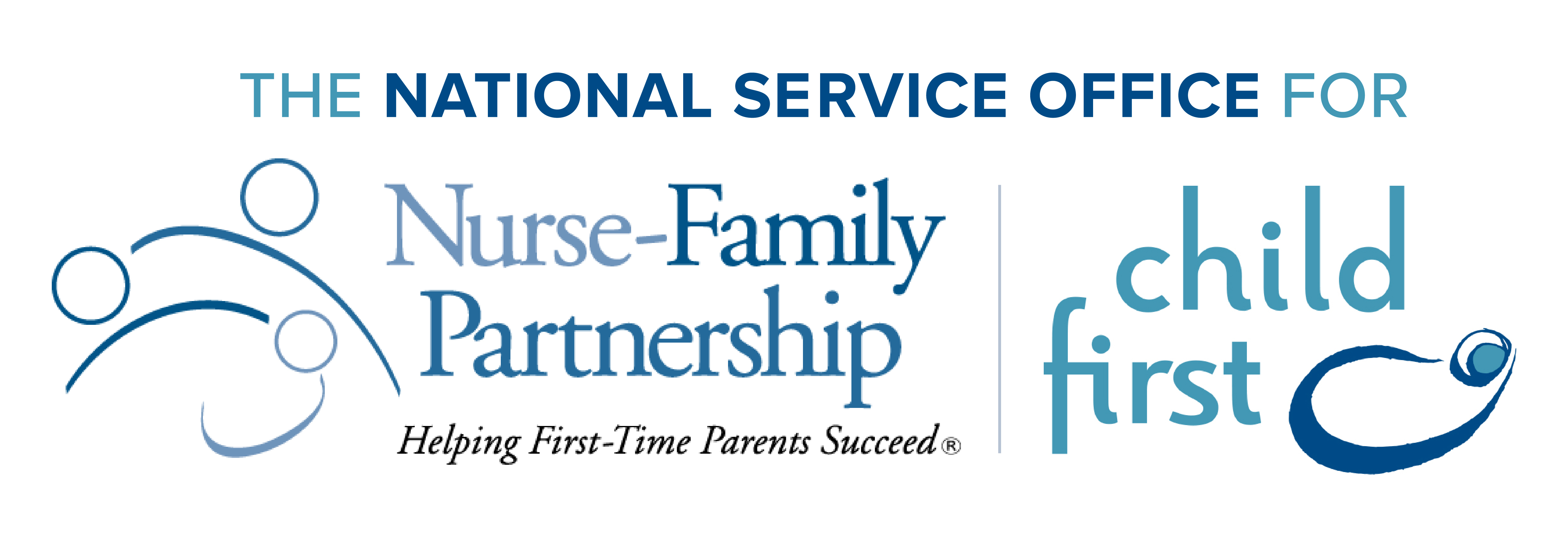Addendum to Child First RCT Publication in Child Development
(Lowell et al., 2011)
Margaret Briggs-Gowan, Ph.D.
Associate Professor and Interim Chief of Child and Adolescent Psychiatry
University of Connecticut School of Medicine
Kimberly J. McCarthy, M.S.W.
Research Associate
University of Connecticut School of Medicine
This document presents the results of additional follow-up analyses to the 2011 Lowell et al. paper. These analyses were conducted to evaluate whether Child First treatment effects were still evident a full six months after the end of treatment. Thus, these analyses include only those participants whose data were collected at least 180 days after the end of treatment (Mean=281, SD=58, Min=181, Max=394) and are restricted to data collected at the 12-month follow-up time point.
Analysis of Covariance models (ANCOVAs) were conducted. These models controlled for the same covariates as the analysis in the published study. Specifically, the ANCOVAs controlled for the pre-test scores on the measure being tested and maternal education. As shown in Table 1, results indicated a significant effect of Child First on child Externalizing problems (ITSEA), maternal psychopathology (BSI), maternal depression (CES-D) and services received.
Analysis of the baseline equivalence of these measures is presented in Table 2. As in the original publication, the measures examined had acceptable internal consistency (α >= .70) at both baseline and the follow-up (ITSEA Externalizing α = .77 and .92; CES-D α = .88 and .90, PSI α = .91 and .91, respectively). The internal consistency of the BSI was not examined because item-level data were not available.









